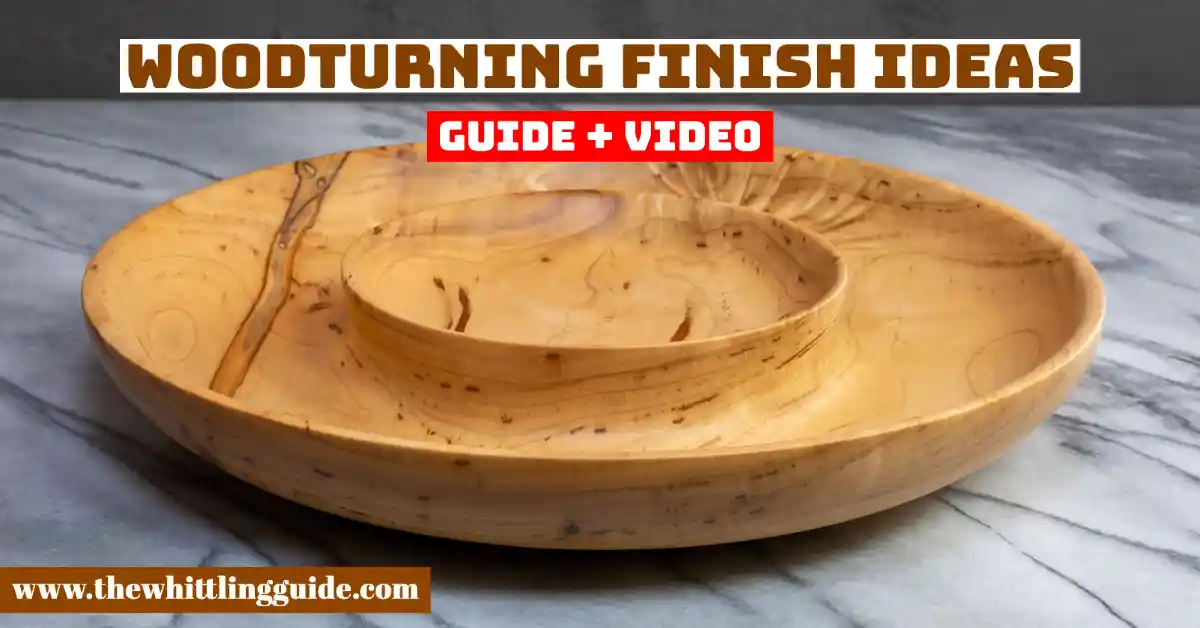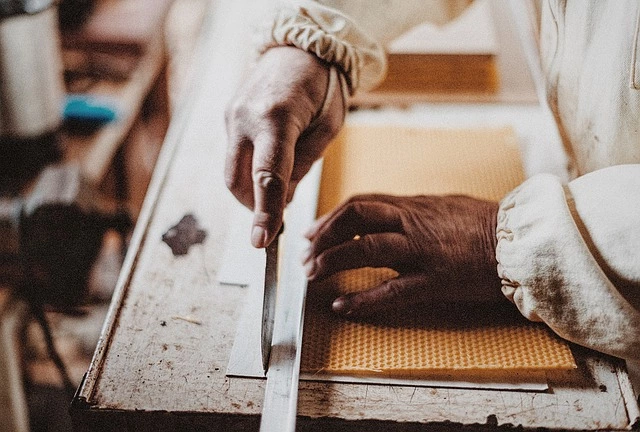
Woodturning finishes
Woodturning finishes refer to the various ways you can protect and enhance the wood you have turned. The finish you choose will impact your piece’s durability and aesthetics. Finishes can be applied to the wood before, during, or after it has been turned. Finishes can make your woodwork look its best. There are several different finishes available, each with its advantages and disadvantages. Below is a list of some standard woodturning finishes, along with their pros and cons:
Finishing wooden bowls
As much as you want a beautiful bowl, it has to remain safe for food contact. There are multiple non-toxic finishing products that you can make use of. These are natural, unleaded products with no hidden ingredients. Below is a list of safe finishing products for your bowl.
Wood bowl finishes
Mineral oil
Mineral oil comes from petroleum. It is colorless and odorless and does not produce any taste. It is simple to use and comes with low water resistance. However, you will need to apply it constantly.
Shellac
Shellac is an extract from the lab bug. Its origin is India. It is water-resistant, and that makes your bowl durable. It comes with a film-forming finish. The supply comes from hardware and art stores.
Beeswax

Inside mineral oil that does not give any scent, beeswax creates a better-smelling finish to the bowl. It comes from bees and is filled with oil. It is water-repellent.
Raw linseed oil
It comes from flax seeds and contains metallic driers. It requires a long time to cure, requires regular application, and is water-resistant. Please do not confuse it with boiled linseed.
Best finish for wooden bowls
The food-safe finish that appeals most to me is an oil-based varnish. It is powerful when resisting water, heat, solvents, and other chemicals. It is durable and easy to apply for beginners to professionals.
Solvents such as acidic foods and alkaline are toxic to human consumption. It depends on the color of the wood and increases surface luster. It wets the wood cells as it penetrates the surface.
Water-based finishes are easily damaged when exposed to water for a long time. Oil-based varnish repairs the wood and fills cracks. It also really restores the original color of the wood.
Lathe finishing
A lathe finish has to beautify an object and protect it simultaneously. Below are some lathe finishes that give you just that.
Shellac
Brush the shellac finish while the lathe machine is turning. You brush it onto the spindle. It dries quickly, and it is food-safe. You get it ready-made of dry flakes that you have to dissolve in denatured alcohol.
The alcohol has to be enough to cover the flakes. The process becomes quick if you place the mixture in a sunny place. When the wood is saturated, start the lathe. Burnish the finish with shavings from the floor or a paper towel.
Carnauba wax
The wax comes on a brick that you place on the turning spindle. It is quick to apply to handles and boxes. The Carnauba wax is hard and is an extract of the Brazilian palm tree leaves. You cannot apply it in its natural state. Rub it using a paper towel.
Blended Oil finishes
These are blended formulations of oil, varnish, and solvent. They are easy to apply and give beautiful finishes. Make your mixing equal parts of the contents. Using a premix saves you time. They are rugged and durable. Spread it flat until it dries. It is ideal for dry wood when making bowls.
Sanding
Sanding is a finishing method that also uses an oil-based finish. Sanding enhances the pore-filling process. Apply the first coat and sand using 180-grit sandpaper. A finer grit is used on the last coats; do not use the method on green bowls.
Making a higher gloss friction polish
Friction polishes come in multiple forms. It works on both natural and stained wood. It is easy to apply and builds up quickly. Apply the friction polish while turning the wood piece on a lathe. The friction motion spread the polish on the piece. That makes the surface smooth and ideal for turners.
The polish is a mixture of shellac and wax. It is formulated in liquid. As soon as the polish is applied, it makes a high gloss finish on all the pieces. Apply the finish as you wipe it on a light coat while the wood piece is stationary on the lathe. Spin the wood piece and use a cloth dampened with the polish to smooth out the finish evenly.
Brands of friction polish differ in the mode of application. Applying the finish using a soft cloth onto the spinning bowl is easier and faster. Use fast speed and see the change as you apply the product. Read the instructions before you start.
Friction polishing is the application of the polish using friction to cure it. Friction polish contains shellac and oil. These are in an alcohol solvent. Versatility describes the polish since it works on several materials.
Can glue is a durable high gloss finish. Make sure the surface is well prepared for a smooth finish. Sand the surface before applying the finish. After cure, use burnishing cream to even out the surface.
Once cured, CA is hard, crystal clear, and waterproof. It is a powerful and fast-setting adhesive in three viscosities: thin, medium, and thick. Thinner glues have faster set times, while thicker versions have better gap-filling abilities.
Although the solvent specifically for CA is expensive, it has the advantage of faster acting and safer. As soon as it contacts moisture, it hardens. It is thin, which is why it spreads easily. It uses an accelerator to speed up the drying process.
Use it sparingly so that it does not turn the surface white. Keep it away from moisture so that it lasts longer. Keep the cap on the bottle and the tip away from things that make it harden. Do not touch the tip of the workpiece. It is waterproof, and multiple application methods match specific projects. Two or three coats have a gloss finish, and more coats provide a satin finish.
How to finish wood-turned bowls
Are you a fan of glossy or matte surfaces? When it comes to finishing wood-turned bowls, it is a matter of personal preference. For decorative purposes, a shiny, glossy look is ideal. For food, a natural, matte finish will be ideal.
Allow the bowl to cure before it gets in contact with food. It is safe to use after a month or more. A penetrative finish ensures a durable finish. Below are steps to follow when applying a finish.
- Gather your application tools, finish your choice and wear protective clothing. Gloves protect your hands from chemicals, and a face mask protects you from inhaling toxic chemicals.
- Wipe your Danish oil onto the bowl. Only when it can no longer take more oil should you stop.
- Give it time to cure and repeat the process for more coats.
- Grain and Sheen: Teak Oil versus Danish Oil Uncovered - January 10, 2024
- The Cherry on Top: Crafting the Perfect Cutting Board - January 9, 2024
- Polyurethane Water-Based vs Oil-Based: Choosing the Right Finish - January 8, 2024
